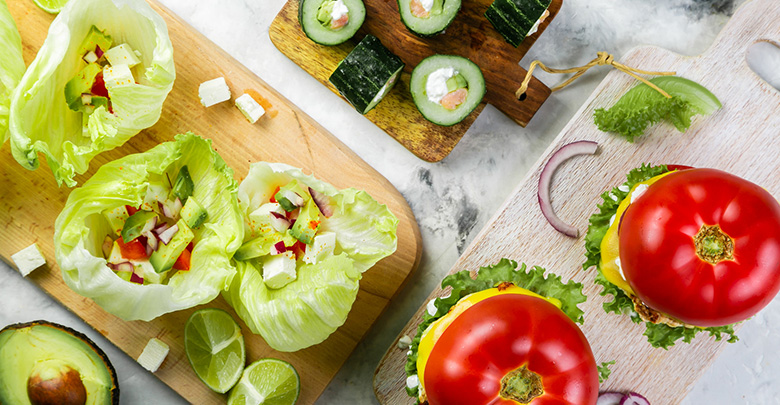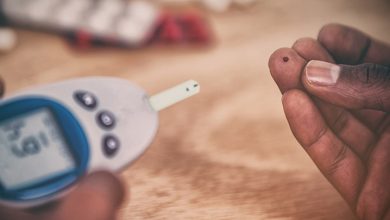Strategies to Lower Insulin Resistance
Things you can do to improve insulin resistance and slow the progression of Type 2 Diabetes

Insulin resistance is a hallmark of early stages of type 2 diabetes, a progressive disease. Over time, insulin resistance causes the pancreas to become overworked. When the pancreas can no longer keep up with insulin demands due to insulin resistance and high levels of glucose in the blood, extra insulin is required – the start of insulin injections.
Weight loss matters!
Weight loss has been shown time and time again to reduce visceral fat, the “deep fat” or fat around the organs that is a likely cause of insulin resistance.
Most diets for weight loss work, but the key is finding dietary changes that you can see yourself sticking with for life. Unfortunately, most people who lose substantial weight on a diet will regain that weight within two years.
Whether you choose a low-carbohydrate diet, a low-fat diet, a meal replacement program, or intermittent fasting, choose one that you can see yourself sticking to for the long haul.
Research is examining if certain diets are better for those with pre-existing insulin resistance, but the jury is still out on which one might be best.
We do know is that if you lose weight and keep it off by sticking to a dietary regimen, you will have improved insulin sensitivity. If you have advanced diabetes, weight loss typically helps you reduce the amount of insulin you take.
Avoid Bad Advice
Hyperinsulinemia (high levels of insulin) also contribute to insulin resistance.
In my practice, I see an astounding number of patients that are started on insulin and then told to eat a specific number of carbohydrates at each meal and snack to match their insulin.
This method is flawed and antiquated.
Patients should be taught how their insulin works and taught how to adjust short-acting insulin based on their blood sugar and what they are going to eat while being encouraged to make dietary choices that will help with weight loss.
For example, if a patient is told by his diabetes provider to eat 60 grams of carbohydrates at every meal, and the patient is in the mood for a cheese omelet with avocado for breakfast, he would need to add 3-4 slices of toast to that meal to meet the recommendation of 60 grams of carbs.
This would be an extraordinary amount of calories to eat for breakfast for someone trying to lose weight. In addition, the combination of the high carbohydrate amount with the high-fat foods will cause even more insulin resistance and blood sugars by lunchtime will likely be high.
When that patient goes back to his diabetes care provider to review blood sugars and is found to have high lunch numbers, he will be instructed to further increase short-acting insulin at breakfast, perpetuating the cycle of insulin resistance and weight gain.
Diet can lower insulin requirements
The goal should be to make dietary changes that result in both weight loss and lower insulin requirements. This would entail eating in a way that creates a calorie deficit (eating fewer calories than your body requires) and making food choices that would require less insulin. Here are some options to consider:
- Take a very low-carbohydrate approach to eating (ideally choosing foods high in mono and polyunsaturated fat and foods low in saturated fat to minimize the cardiovascular risk)
- Make moderate carbohydrate, high fiber, low-fat meal choices
- Follow a very low-fat vegan diet (with fats predominantly coming from mono and polyunsaturated fats)
Exercise lowers insulin resistance
Physical activity can have lasting effects on lowering insulin resistance.
Many people with diabetes will notice that they remain more sensitive to insulin following exercise. This sensitivity typically lasts for 24-48 hours, but you may see the most significant effects about 6-15 hours after exercise.
Because of this, it is recommended that you incorporate regular exercise into your lifestyle and ensure that you exercise at least every other day to reap the benefits of improved insulin sensitivity.
A combination of resistance and aerobic training may give the best results for lowering insulin resistance.
- A large randomized controlled trial showed that a combination of these two types of training had better results on lowering insulin resistance than resistance training or aerobic training alone.
- The group that had the best outcomes for lowering insulin resistance performed the following exercise routine for 8 months: Resistance training 3 days per week (8 exercises, 3 sets of 8-12 repetitions) and aerobic training (equivalent to 12 miles per week at 75% VO2 max).
- However, the results could also be related to spending more time exercising, as the group that performed resistance and aerobic exercise spent twice as much time exercising as the groups that did only resistance training or aerobic training.
Overall weight loss, whether from diet, bariatric surgery or exercise or a combination of all of these, is the main driver for lowering insulin resistance.
If you are able to achieve weight loss primarily through creating a calorie deficit from large amounts of exercise, you may have even more improvement than diet alone in improving insulin sensitivity and reducing in unnecessary glucose release into the bloodstream by the liver (i.e. better glucose control overnight).
Conclusions
Weight loss is the foundation for reducing insulin resistance.
- Matching insulin dose to a diet that yields weight loss should be the gold standard.
- There are no specific carbohydrate requirements for someone with diabetes. It is not recommended to eat a fixed amount of carbohydrates at each meal.
- Incorporating a regular exercise regimen that involves exercise at least every other day will help to improve insulin sensitivity, and may also help you lower your insulin doses.
- Resistance exercise in combination with aerobic exercise could be better than resistance or aerobic exercise alone.
References
AbouAssi H, Slentz CA, Mikus CR, et al. The effects of aerobic, resistance, and combination training on insulin sensitivity and secretion in overweight adults from STRRIDE AT/RT: a randomized trial. J Appl Physiol (1985). 2015;118(12):1474–1482.
Colberg SR, Sigal RJ, Yardley JE, Riddell MC, Dunstan DW, Demsey PC, Horton ES, Casorino K, Tate DF. Physical Activity/Exercise and Diabetes: A Position Statement of the American Diabetes Association. Diabetes Care. 2016;39(11) 2065-2079
Hallberg SJ, McKenzie AL, Williams PT, et al. Effectiveness and Safety of a Novel Care Model for the Management of Type 2 Diabetes at 1 Year: An Open-Label, Non-Randomized, Controlled Study. Diabetes Ther. 2018;9(2):583–612.
Kahleova H, Hlozkova A, Fleeman R, Fletcher K, Holubkov R, Barnard ND. Fat Quantity and Quality, as Part of a Low-Fat, Vegan Diet, Are Associated with Changes in Body Composition, Insulin Resistance, and Insulin Secretion. A 16-Week Randomized Controlled Trial. Nutrients. 2019;11(3):615.
Keshel TE, Coker RH. Exercise Training and Insulin Resistance: A Current Review. J Obes Weight Loss Ther. 2015;5(Suppl 5):S5-003.
Sacks FM, Lichtenstein AH, Wu JHY, Appel LJ, Creager MA, Kris-Etherton PM, Miller N, Rimm EB, Rudel LL, Robinson JG, Stone NJ, Van Horn LV; American Heat Association. Dietary Fats and Cardiovascular Disease: A Presidential Advisory From the American Heart Association. Circulation. (2017)136(#):e1-e23.





